Joshua Tree’s Desert Doghouse is Where Rock ‘n’ Roll Style Meets ‘Dark Nostalgia’
Check into this wildly cool rock star residence-turned-luxury getaway in the California desert.
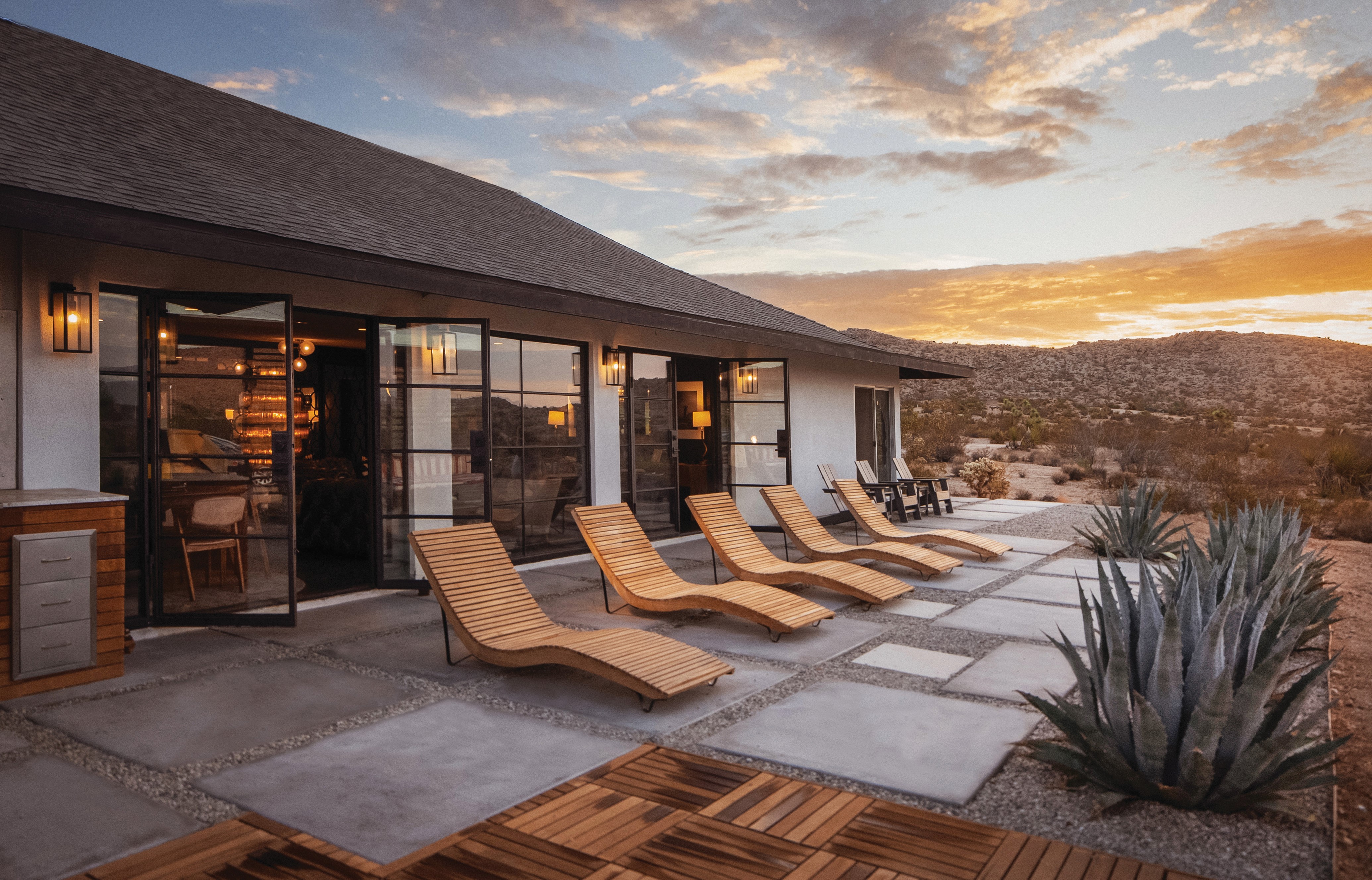
Joshua Tree, one of the most iconic and compelling places in America, in the High Desert of California, is bordered to the south by the Coachella Valley and encompasses Joshua Tree National Park. The Park itself occupies nearly 800,000 acres of otherworldly, starkly beautiful scenery, and the rest of the land can seem scarcely civilized outside of the few towns that cling to the rocky mesas and deep-rutted valleys. Most of the surrounding roads are unpaved, and the houses dotted around the cactus-studded hills tend to blend into the harsh landscape.
Close observers however may notice that one house in particular, though well off the beaten path, seems to increasingly be a hive of activity. If they happen to drive down the right dirt road they might even have seen the mysterious sign reading “Desert Doghouse.” And perhaps they’ve even caught a snatch of pulsing music, quickly whipped away by the wind.
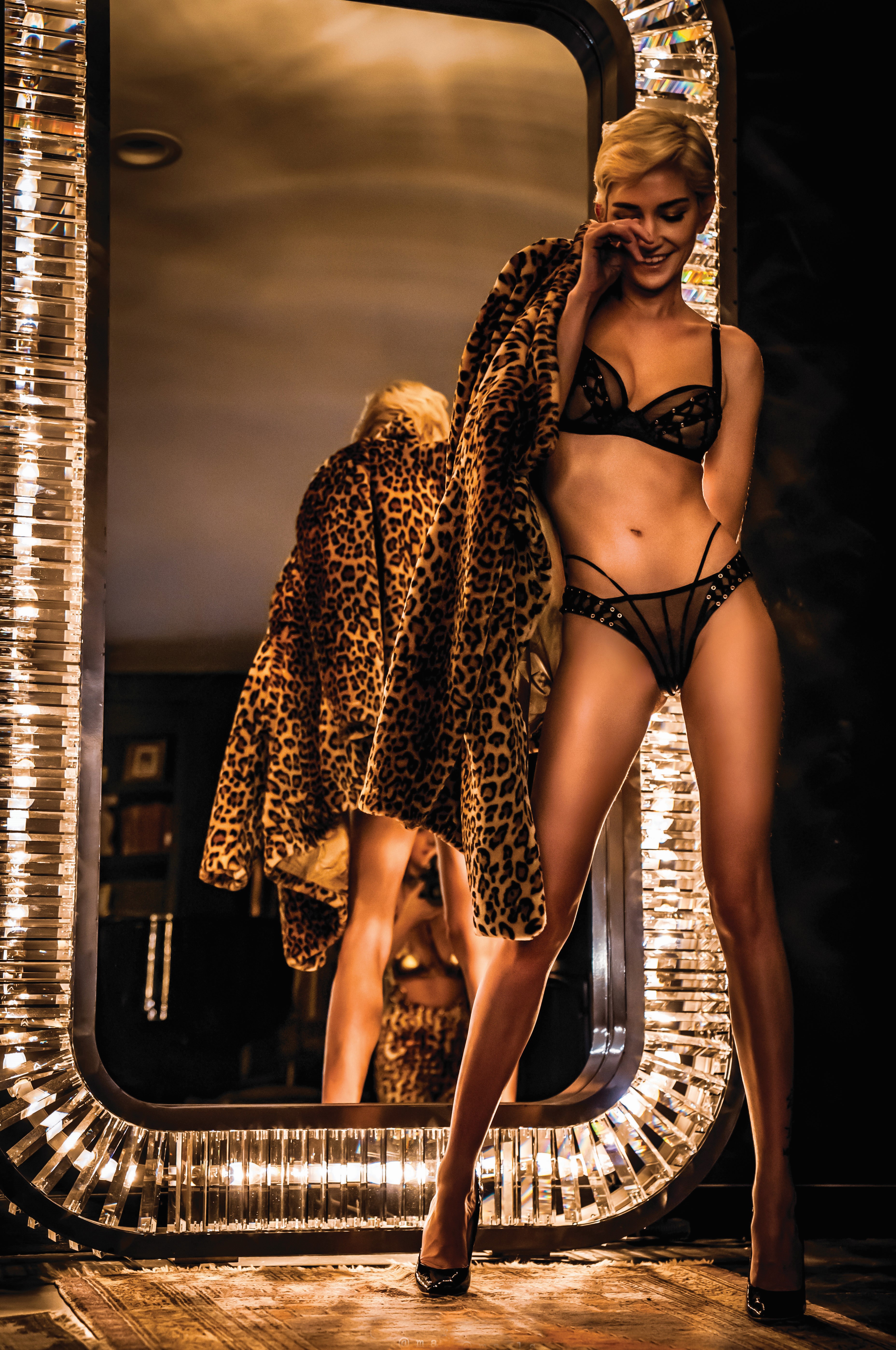
(Major Feels)
Originally built as a mystery rock star’s private residence, and previously relegated to private parties, writing and recording sessions, and film and photo shoots for his high-profile friends, last year local boutique luxury firm Foxden Hospitality took over management of the property to offer it as a one-of-a-kind event and vacation rental to discerning clients. The mysterious Desert Doghouse is finally revealing its secrets. And of course we had to be among the first to cross the storied threshold and experience its storied allure.
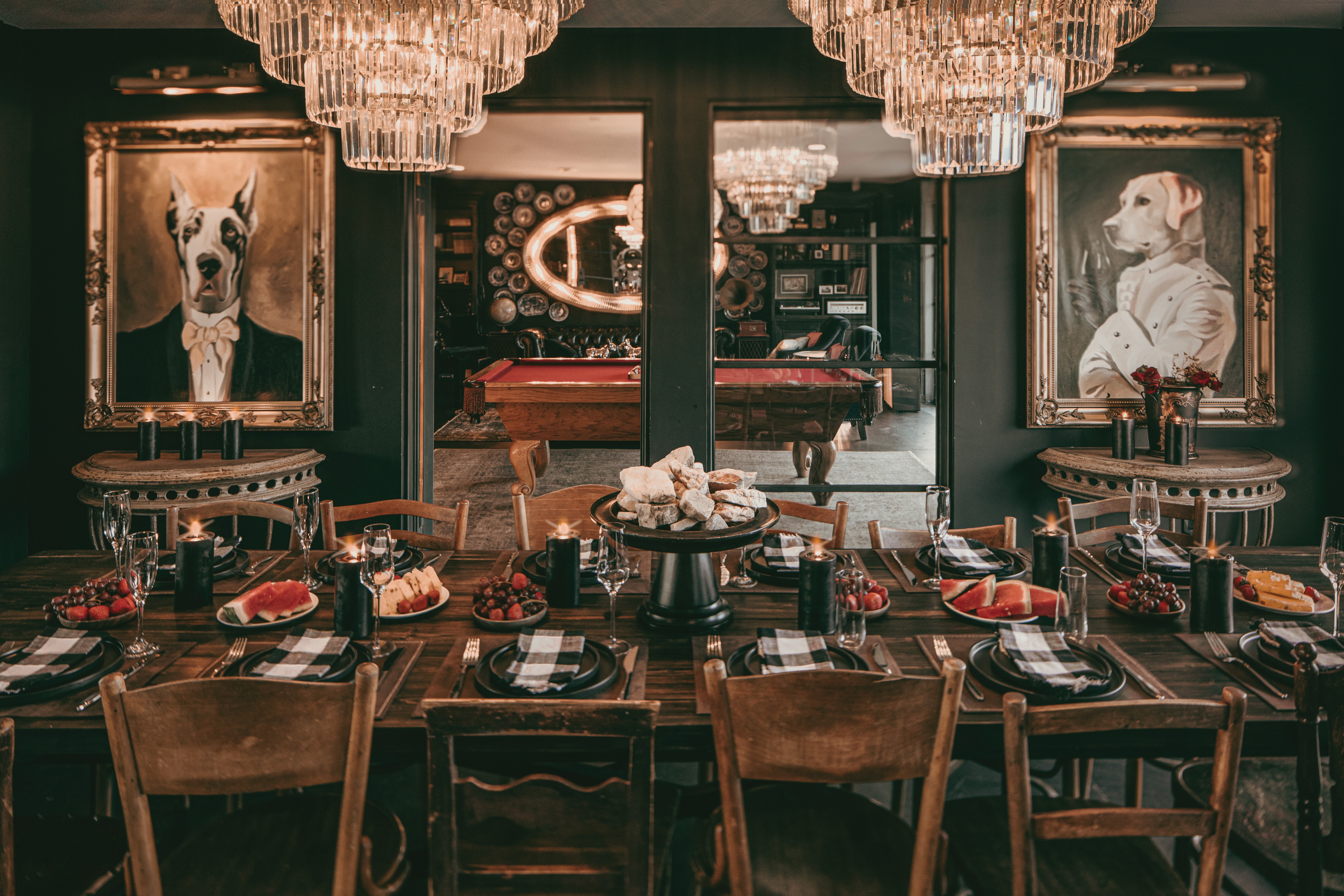
From the beginning the house was designed as a place for friends to gather, and the interior of the 4,500-square-foot spread is laid out for intimate entertaining, with a music room, library, pool table, grand piano, sky deck, outdoor dining area, hot tub, and several bars.

The decor also goes against the prevailing rustic / southwestern grain of most Joshua Tree houses, instead layered in black paint, black marble, rich, dark leather, and industrial-chic fixtures, with an overall aesthetic resembling “equal parts luxury retreat and playful secret-society clubhouse,” as Foxden Hospitality cofounder Dale Fox puts it.
It emphatically evokes “Dark Nostalgia”, the trend identified by author and design scholar Eva Hagberg in her cult book of that name, but with a distinct rock ’n’ roll edge and layers of interest and patina provided by the many vintage pieces.
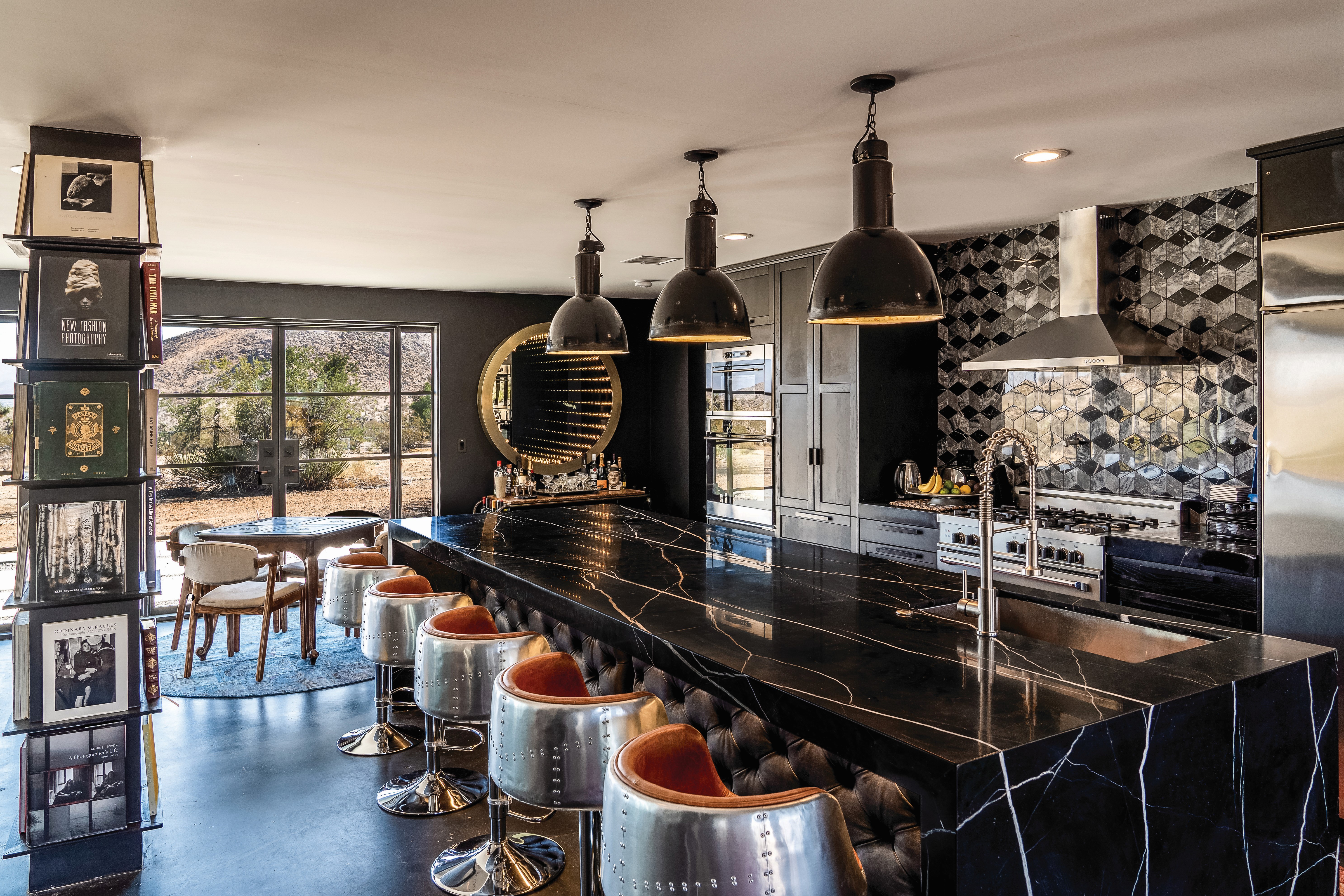
“As the late twentieth-century fascination with rounded shapes, organic influences, and plastics fades, interior designers are increasingly drawn to deep colors, polished woods, velvets, furs, leather, dark metals, and others that have a nostalgic quality―materials used liberally in centuries gone by,” as Hagberg noted. “Efforts to shape a more authentic, less austere present by creating an idealized version of the past.”
Foxden co-founder Brookelyn Fox explains that, “The idea was to use only original materials in the house. No-one likes a person who pretends to be something they are not. The owner feels the same way about materials: no fake antiques, fake marble, fake wood, fake brass, mass-produced or mass-marketed furniture, art and accessories are allowed anywhere in the house. “

She adds, “This is meant to create a sense of timelessness and ‘realness’ that has been lost in many homes today. There is also a certain typical post-boho minimalism look to most desert houses that the owner wanted to stay away from.”
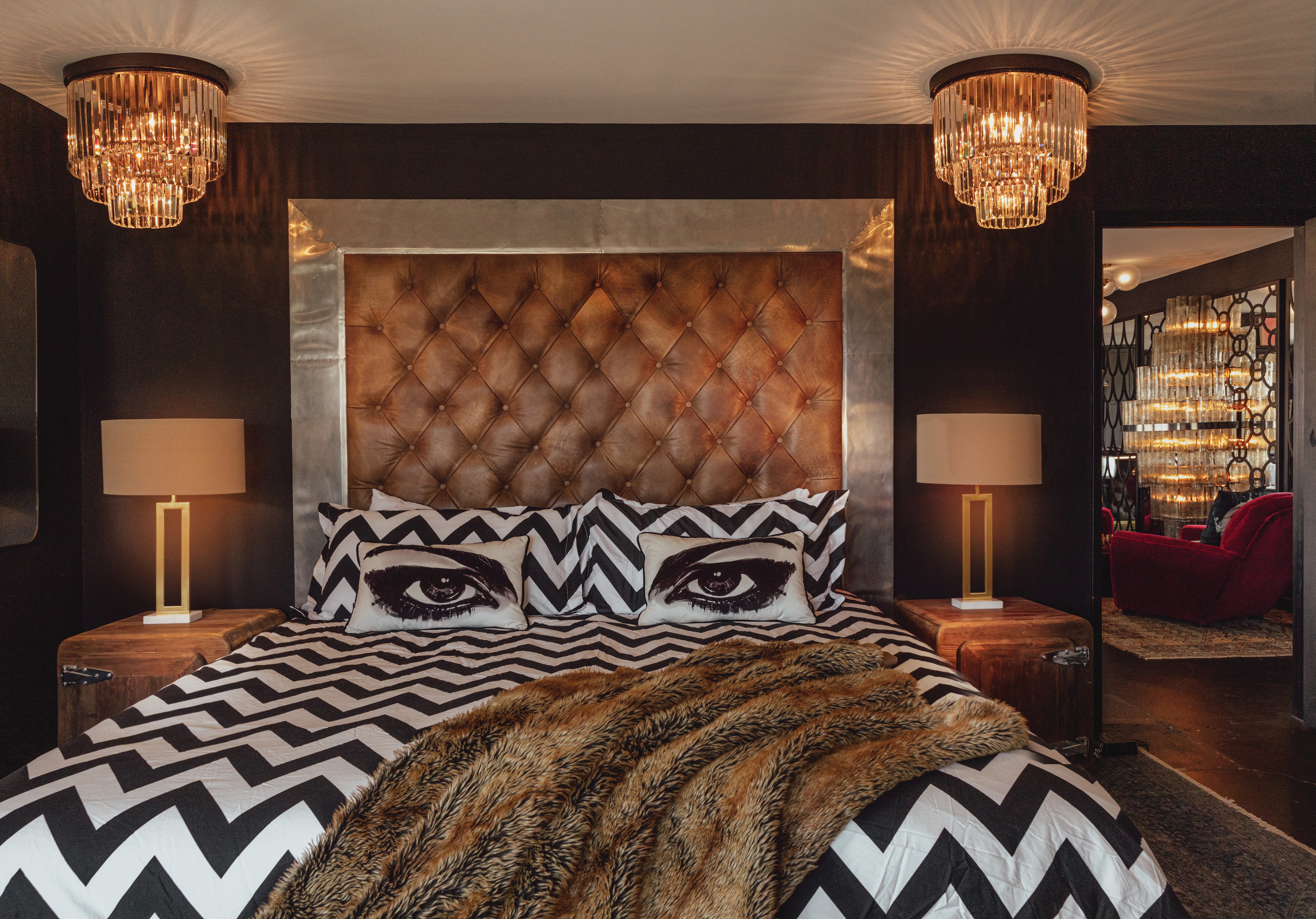
Even the photographs on the walls—some of sexy models in latex catsuits and such—are more real in the sense that, upon closer inspection, they were actually taken at the house, during what we can only imagine must have been some memorable evenings.
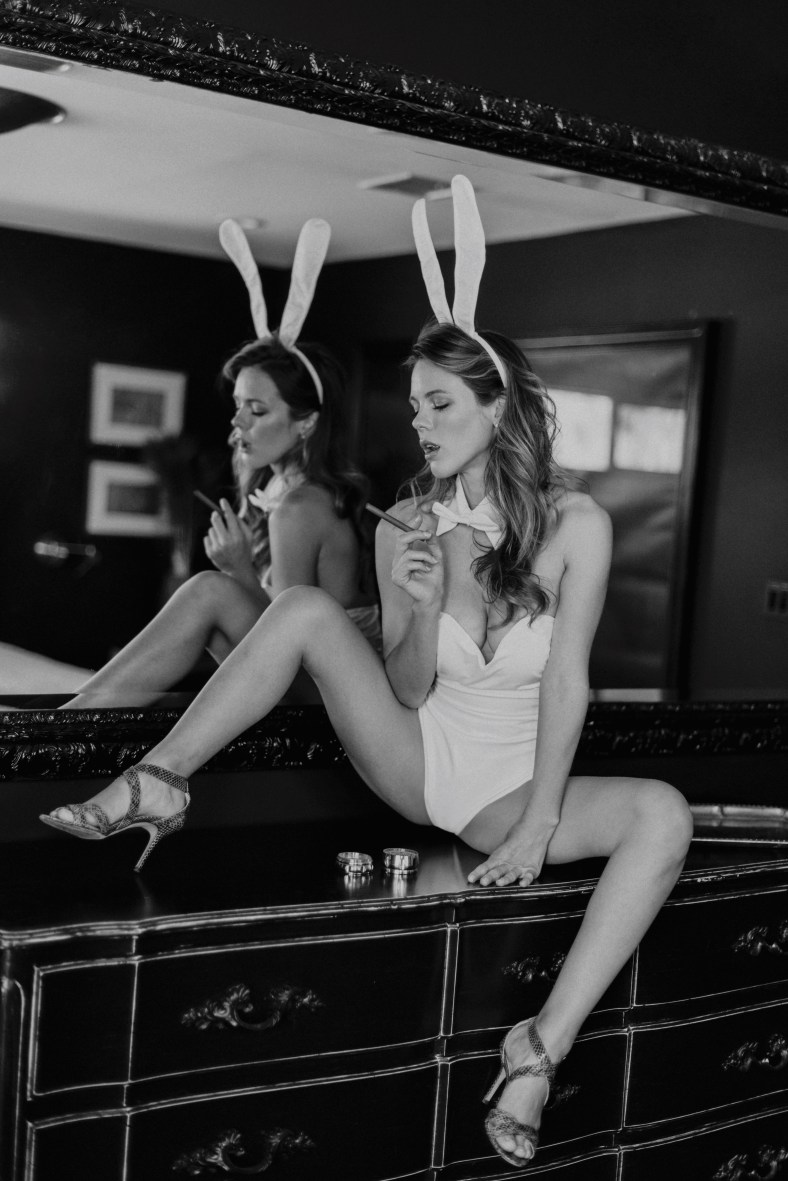
Initially, word spread from the owner’s friends and “the house attracted a ceaseless stream of requests from actors, musicians, producers, and the like, seeking its covert embrace,” the Foxes tells us, leading to the decision to bring Foxden on board.
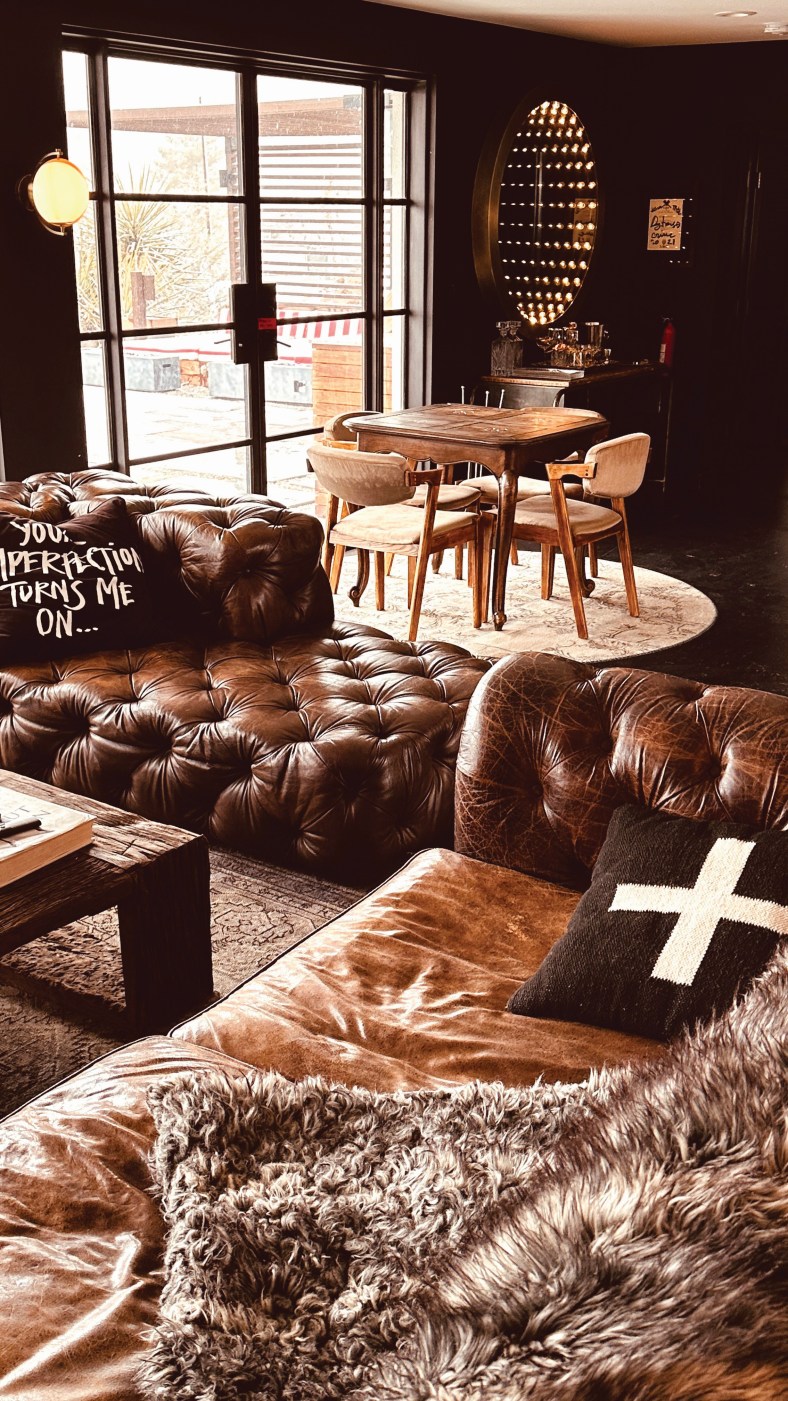
“There existed an ineffable allure to its ambiance—a magnetic force that impelled individuals to emerge from their seclusion and gather around a table, engaging in spirited discourse or savoring a sumptuous repast. Perhaps it was the lingering essence of a bygone era, that of the illustrious speakeasy, which lent itself to this captivating imagery.”
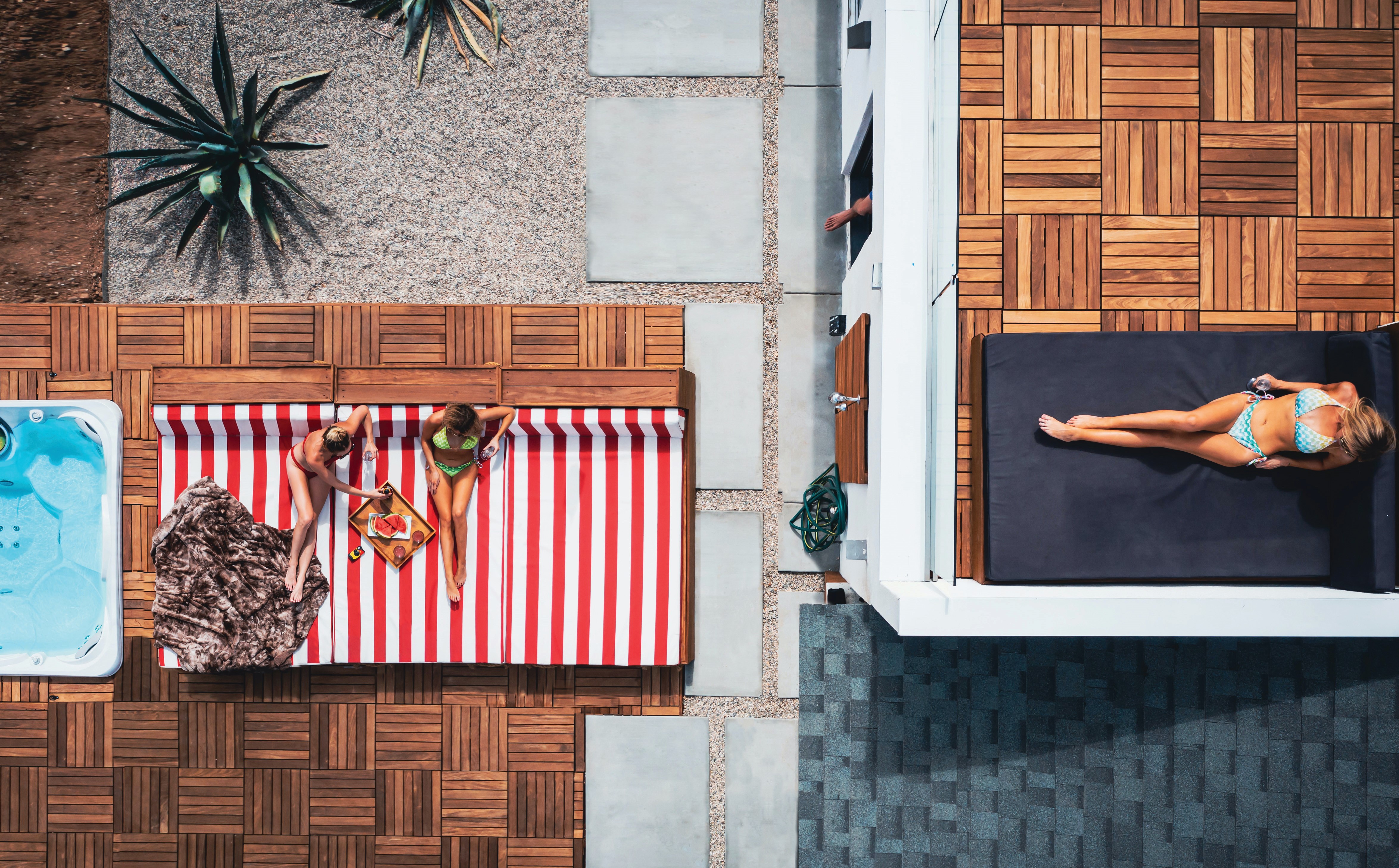
While the house has now been prepared for outsiders, so to speak, very little has changed. “One relic from those hallowed times is the legendary Champagne Phone,” Dale Fox says. “A vintage wooden-cased rotary-dial positioned resolutely near the kitchen, it stands as a beacon, ready to answer your call should the nectar of celebration run dry in the wee hours of the night. A singular feature that, we must confess, has seen more use than one might surmise.”
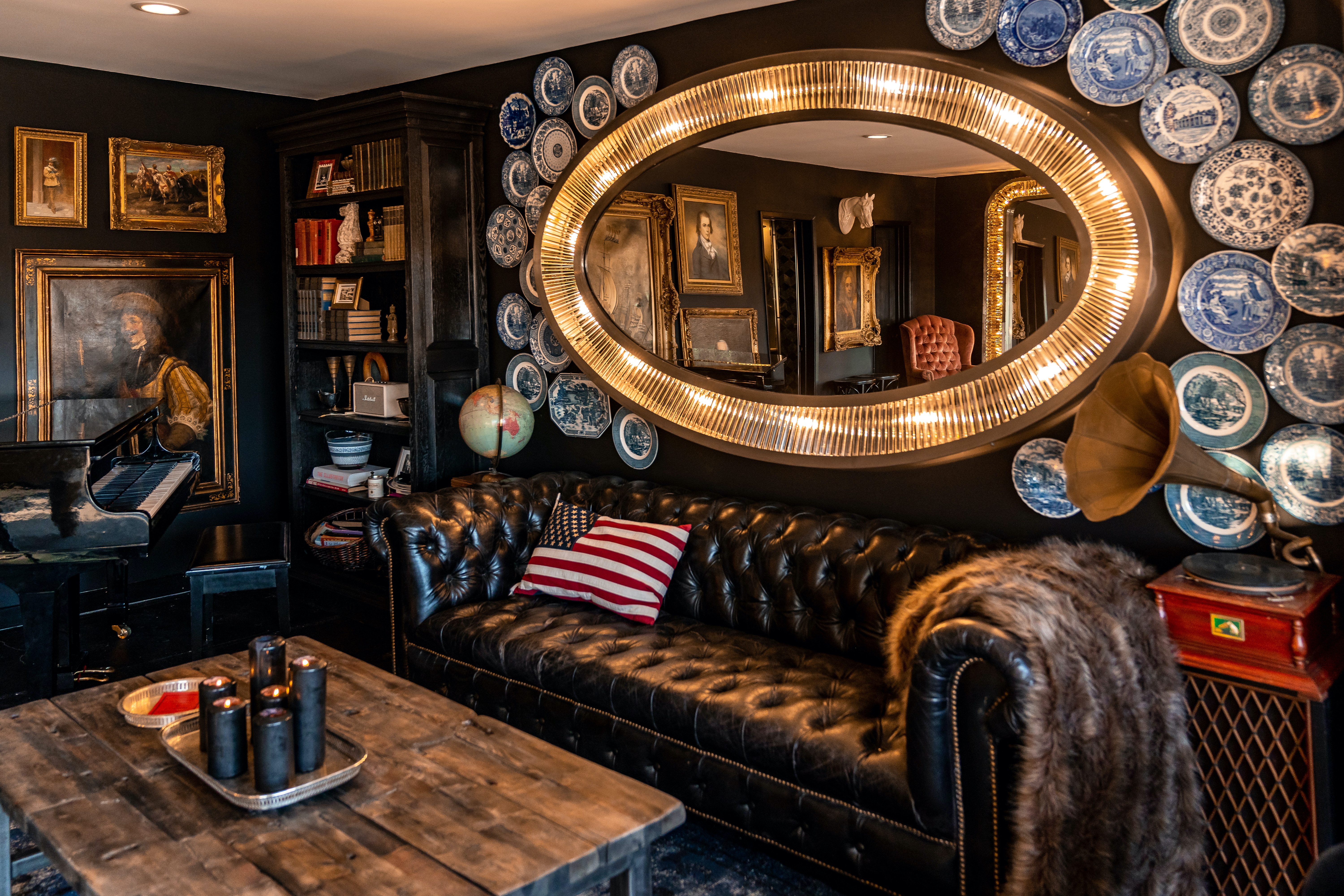
Just one of the features designed to make the Desert Doghouse “an enchanting, magical place to host,” Fox points out. “Little details like leather-wrapped door handles, thousands of vintage books and original art, or a wall of playable vintage Fender Stratocaster guitars that have toured some of the biggest stages in the world are meant to create the perfect backdrop to make amazing memories with people you love while you are here.
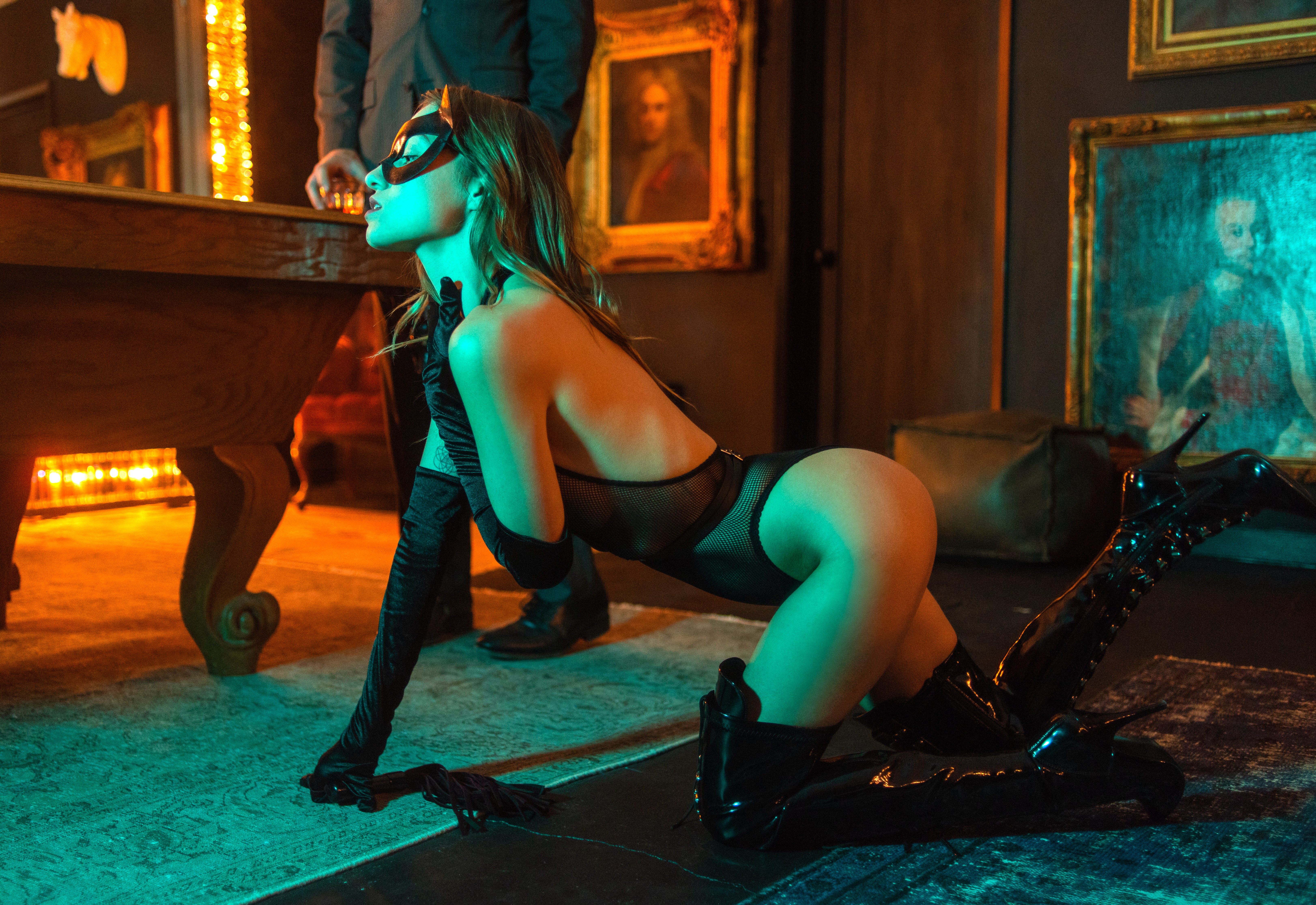
The maximalism of the Doghouse may not be for everyone. But the owners and curators wanted the guests to ‘feel’ the house. They wanted to create an environment that does not look overly curated or ‘designed.’ They wanted a house that feels like it grew over time. In fact the owners are adding to their collection of art and furniture all the time.”
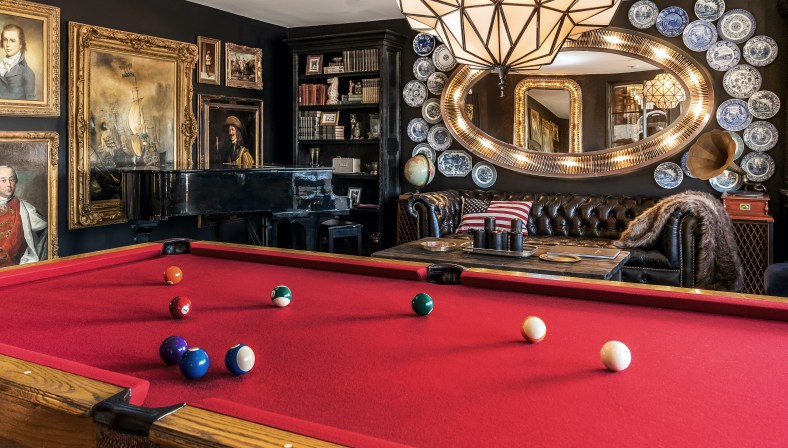
“Some never went into production so there are some oddball and one-of-a-kind pieces for sure,” Fox notes. Some of the other vintage items even offer hints as to the identity of various famous guests who made the pilgrimage to the Desert Doghouse when the rock star owner was in residence. “If you want to figure out who was here, there are some clues left in the house,” Brookelyn Fox notes, declining to provide names; “officially we can’t move past our NDAs.”
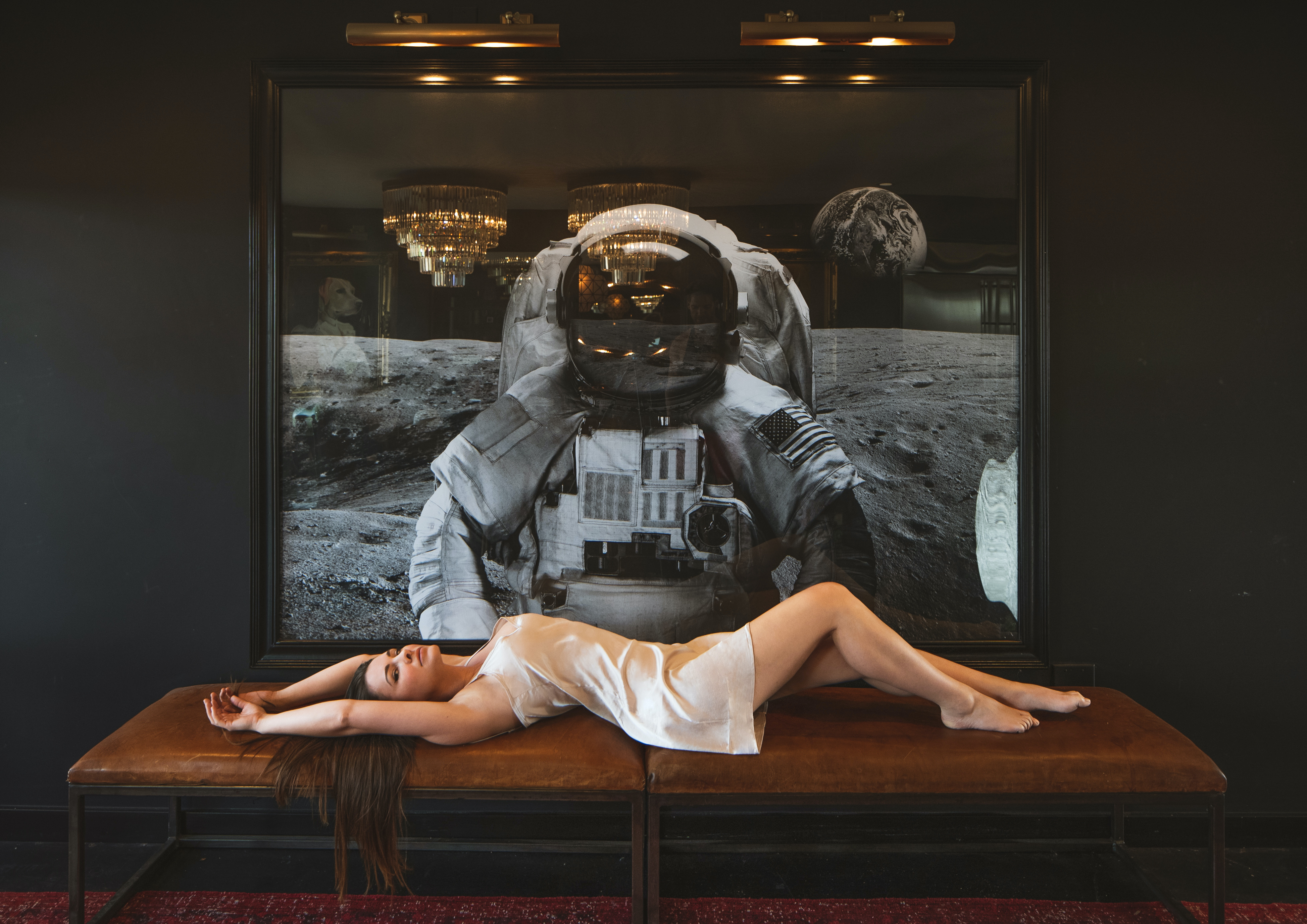
Many of the most prominent pieces, including a leather Chesterfield sofa emblazoned with the Union Jack, were handmade by the late, renowned British designer Timothy Oulton, a Dark Nostalgia luminary, as one-of-a-kind prototypes.
Though as we’ve noted the house evokes a strongly compelling sense of nostalgia, under Foxden’s management it is more than ready to embark upon a new era. Of course it’s fun to try and figure out which movie star frolicked with which supermodel under the antique chandelier in the Game Room. But it’s even more gratifying to now have the opportunity to create some legends of your own.
This article originally appeared in the Sept/Oct 2023 issue of Maxim magazine.
